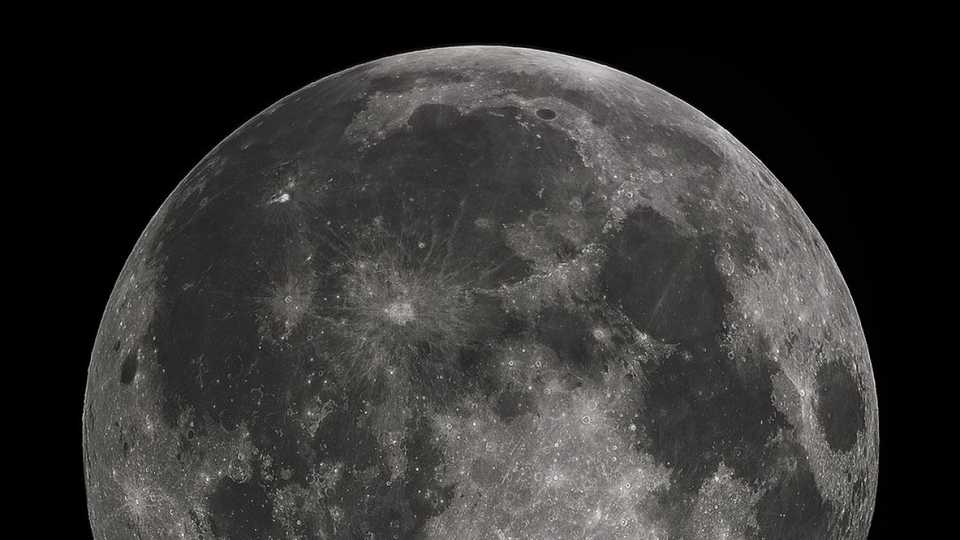In this activity students will:
- Use models of Earth, the Sun, and the Moon to discover why moon phases occur.
- Learn the order of the moon phases from one full moon to the next.

"Full Moon 2010" © Gregory H. Revera
You'll be surprised at how many misconceptions you can debunk by modeling the phases of the moon with a light and a styrofoam ball!
In this activity students will:
Follow the instructions in Kinesthetic Astronomy: Set Up to set up your kinesthetic circle.
Ask the class to list possible explanations for the phenomena of moon phases. Try to avoid making comments on the validity of the theories offered. Have students write down their own explanations, based on what they have heard.
Because the visualization in this activity can be difficult for some students, consider doing this activity with a smaller group while the rest of the class works on a moon phase chart or another project, or do this activity more than once.
Although everyone is familiar with a few predictable shapes that our moon can take in the sky, misconceptions regarding the cause of these phases abound. Stahly, Krockover and Shepardson (1999), included a list of “five frequently occurring notions featured by children aged 9-16 regarding the phases of the moon”:
So what causes the moon’s phases? Let’s begin with the basics. The Moon is a natural satellite of planet Earth, taking about a month to revolve all the way around our planet. Its orbit is very nearly circular; it stays about 380,000 kilometers away from us as it moves counterclockwise (as viewed from a northern hemisphere perspective). It also stays fairly close to the Earth's equatorial plane (an imaginary extension of Earth's equator out into space).
As you may expect, the Moon doesn’t just revolve, it also rotates about its own axis – but in quite an interesting fashion. Over the millennia, the Moon has become "locked" into a special kind of motion around the Earth. It rotates on its axis at the same pace as it revolves around the Earth. As a result, the Moon keeps the same face toward us throughout its orbit. (Watching a video is perhaps the best illustration of this). So, you may often hear astronomers talk of the “nearside” and “farside” of the moon. While Earthlings can only view the nearside, astronauts and spacecraft have successfully taken images of the farside. Note that there is not actually a “dark side” of the Moon – with this demonstration, you’ll see how the sun’s rays will strike the entire surface!
The observed phase of the Moon is determined by its position relative to Earth and the Sun. In the 29.5-day period that the Moon takes to orbit the Earth, it will appear as different shapes because of our planet’s viewpoint. In actuality, half of the Moon’s surface is being hit by sunlight. But, because of our relative positions, we’ll see the Moon swell from the new Moon, through the crescent, to the first quarter, to the swollen gibbous moon, and then the full Moon, before waning to the new Moon again. Study the diagram below, but don’t feel intimidated. The kinesthetic portion of the activity will be the most “illuminating”!
For more information, see:
A Private Universe Project: http://www.learner.org/teacherslab/pup/act_moonphase.html
Moon Phases Diagrams: http://www.astrosociety.org/education/publications/tnl/12/12.html
Parts of this lesson are adapted from the Kinesthetic Astronomy program developed by the Space Science Institute, 2004.
Image: "Full Moon 2010"by Gregory H. Revera, licensed and modified under CC BY-SA 3.0; originally sourced from https://en.wikipedia.org/wiki/File:FullMoon2010.jpg
Middle School
MS-ESS1-1: Develop and use a model of the Earth-sun-moon system to describe the cyclic patterns of lunar phases, eclipses of the sun and moon, and season.